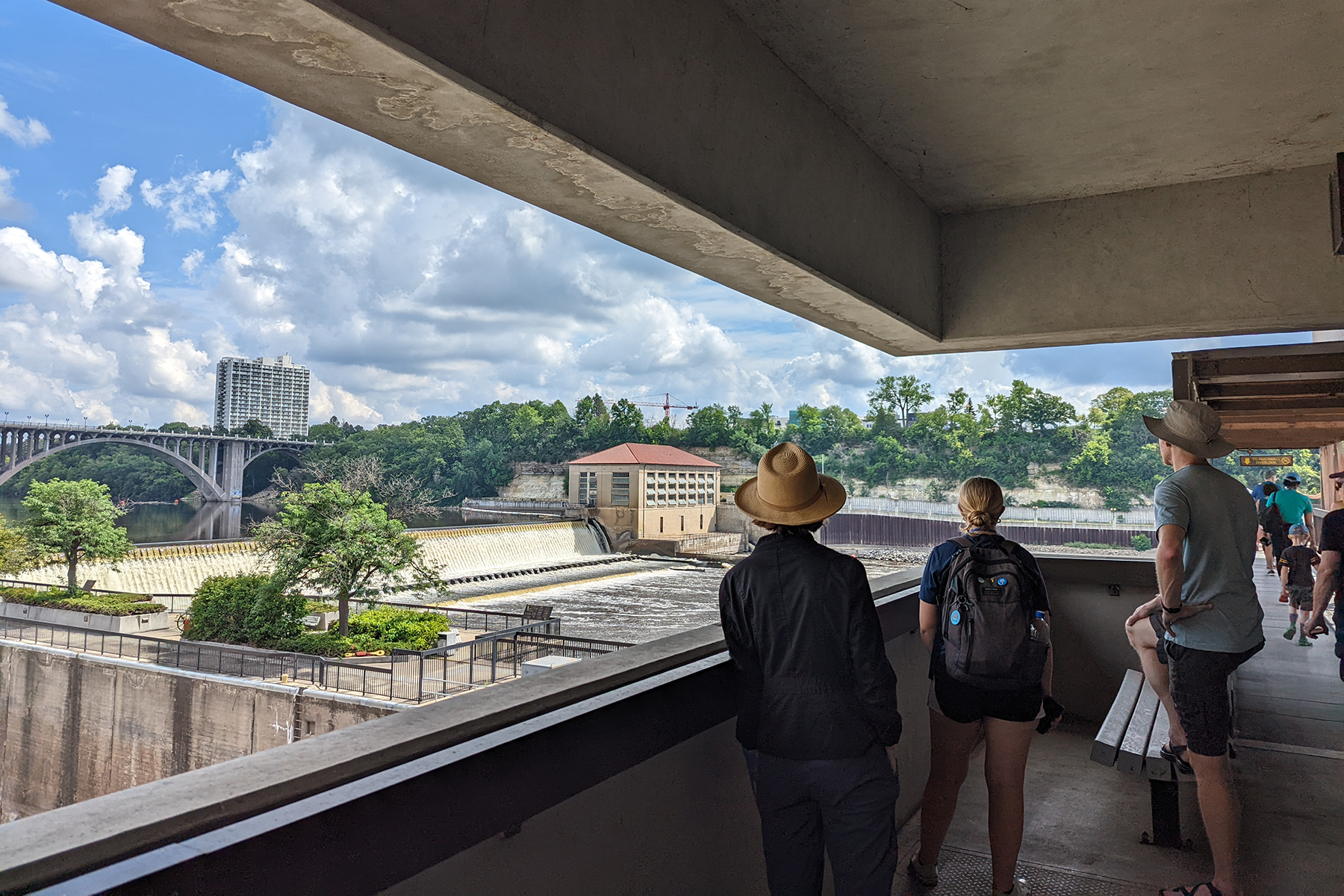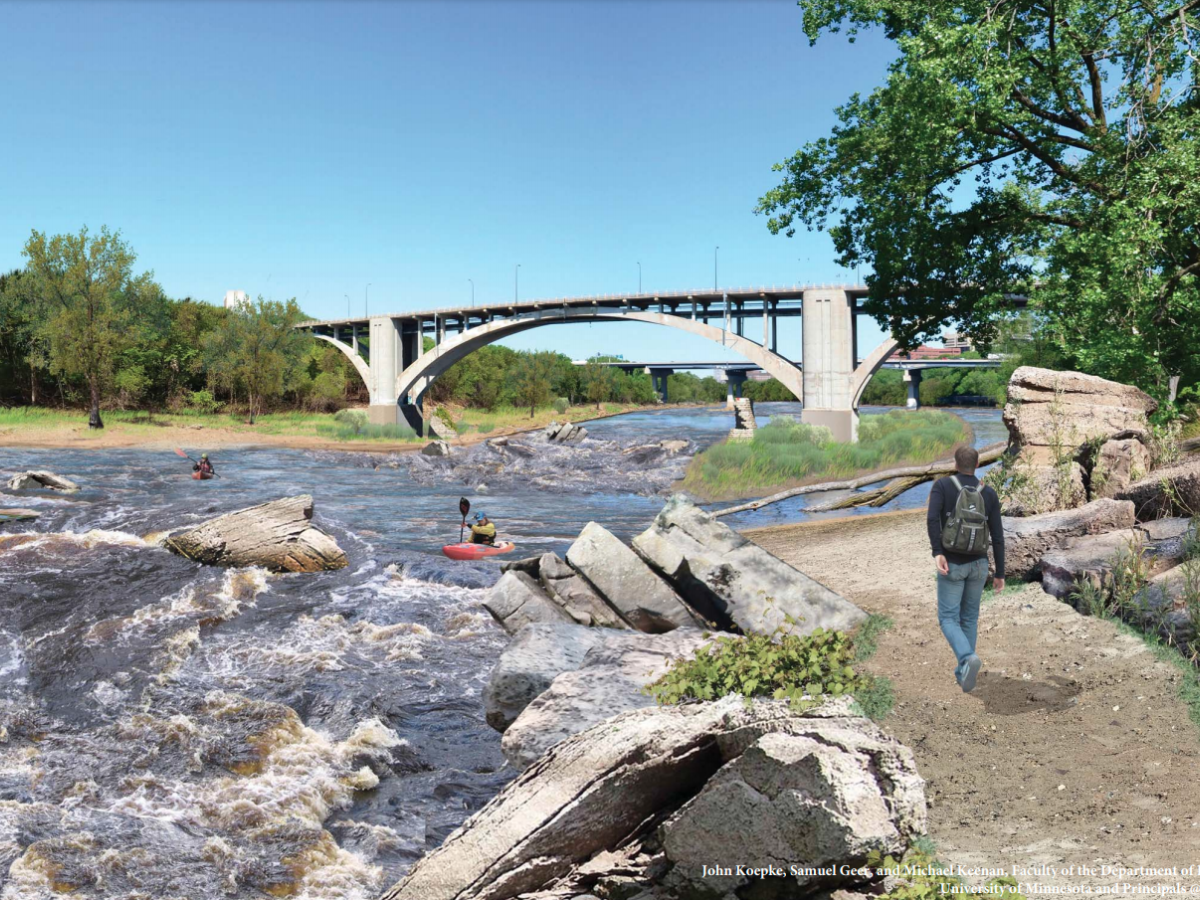What you need to know about the Army Corps' studies of Twin Cities locks and dams

When Congress closed the Upper St. Anthony Falls lock in 2015, all three of the Minneapolis and St. Paul locks stopped serving commercial barge traffic. And since that was the primary purpose for building locks in the first place, we have an opportunity to consider whether we still need and want these structures.
The U.S. Army Corps of Engineers, which owns and operates the locks, is about to begin studying possibilities for the Lower St. Anthony Falls lock and dam and Lock and Dam 1 (the Ford dam).
Upper St. Anthony Falls has a separate study, primarily because neither the lock or dam is being considered for removal, while the other two are. Here's why.
What's a disposition study?
The first step the Corps takes to examine the future of locks and dams is called a disposition study, which is an official process to examine the costs and benefits of federal projects no longer serving their authorized purpose.
The disposition study will look at different potential future scenarios for the locks and dams and attempt to weigh the costs and benefits of each by the Corps' criteria.
The Corps' primary consideration in a disposition study is the Corps budget and the financial costs and benefits to the Corps of different scenarios. The Corps also considers community will and environmental outcomes.
Once the Corps completes its study and issues recommendations about what should happen to the locks and dams, it's up to Congress to approve and fund any changes to the structures, their operations or their ownership.
Possible scenarios for two Twin Cities locks and dams
Broadly speaking, there are a few potential options that the Corps will consider in the disposition study for Lower St. Anthony Falls lock and dam and Lock and Dam 1.

Staying the course
The Corps could continue to own, operate and maintain each structure as-is. The Corps has told us that this isn't the most likely outcome because this route costs the Corps money without providing any benefit to the Corps.
Lock and dam removal
The Corps will also study what it would cost the agency to remove the locks and dams and what the consequences of their removal would be for the community and the environment. For the Corps to pursue this option, it would have to find that the cost of removing the structures is less than the cost to the agency of keeping them in place.
A new owner (or owners)
The Corps could find that it's most cost-effective for the Corps to transfer or sell the locks and dams to another owner. Potential owners could include a corporation, nonprofit or trust, or another government entity. That owner could choose to keep the structures in place or attempt to remove them. If no party expresses interest in taking ownership of an entire lock and dam structure, the Corps might choose to sell just portions.
The most likely interested owner would be a hydropower operator seeking to continue operating the dams as they are. However, if any part of the structure falls into private ownership, that would reduce the public's influence on their future. So it's important that the question of dam removal be studied thoroughly before allowing a private owner to keep the dams in place.
Another owner might be interested if they want to take ownership for the purpose of removing the locks and dams. There are examples of this across the country involving nonprofits as well as state, local, and tribal governments. This removal process would still require extensive permitting and environmental review.
Will the study be enough?
The disposition study on its own might not give us as full of a picture as we'd like it to, particularly when it comes to the costs and benefits of dam removal. Friends of the Mississippi River and our partners are pursuing additional research to guide our community's decision-making.
The Corps' disposition study timeline
The Corps began the disposition study for Lower St. Anthony Falls and Lock and Dam 1 in the fall of 2022. The Corps held four public meetings and received hundreds of public comments about the scope of the study (essentially, what factors and data the disposition study should take under consideration). FMR submitted comments on this scope as well.
FMR also helped hold over 40 tours and presentations about the disposition study in 2022, with more to come over time. Check our events calendar or sign up as a River Guardian to hear about future opportunities for presentations and events.
The Corps will likely release their draft completed study for public comment in 2027.
The study is just an early step in what will likely be a long process. Congressional authorization would be required for any significant changes to lock and dam ownership, modification or removal. Any of these outcomes could also be costly; funds would have to be assembled. And a big step like dam removal might also require further study and community engagement after the Corps' initial study process. Should the dams be slated for removal, it could easily be 10 or even 20 years before structural work begins.
The Mississippi River has also been heavily altered to support human activity and industrial traffic. Removing dams won't return the river to its "natural" state without extensive associated work to restore the shoreline and river bottoms and replace boulders removed from the channel, plus additional work that we may not be able to forecast quite yet.
What about Upper St. Anthony Falls lock?

The Corps is finalizing its disposition study for the Upper St. Anthony Falls lock. (Xcel Energy owns the Upper St. Anthony Falls dam, which is not being considered for dam removal.)
FMR supports the leadership of Owámniyomni Okhódayapi in its work to take ownership of some "excess" land at the Upper St. Anthony Falls Lock to restore Dakota culture and environment at the Falls. Removal of some parts of the lock structure itself may be possible over time, but the damming function must be retained in some way.
We believe that the Corps should be responsible for ownership and maintenance of the lock structure itself for as long as it remains in the river. Without proper upkeep, the lock structure could become an eyesore or even a hazard.
Learn more and get involved
This process will unfold over many years, and FMR will be involved every step of the way.
We'll host a variety of workshops, tours and events about the future of Twin Cities locks and dams in the coming years. We're also happy to give special presentations to community groups upon request. And we'll be sure to tell our advocates about ways to weigh in and shape the future of our metro river.
Learn about Twin Cities locks and dams, the pros and cons of removal and more here. For additional details, contact FMR Land Use & Planning Program Director Colleen O'Connor Toberman, ctoberman@fmr.org, 651.477.0923. The best way to keep up with the latest news and hear about opportunities to get involved is to sign up as an FMR River Guardian below.
Become a River Guardian
Sign up and we'll email you when important river issues arise. We make it quick and easy to contact decision-makers. River Guardians are also invited to special social hours and other events about legislative and metro river corridor issues.
See a map of our three Twin Cities locks and dams, a timeline of when and why they were built, and find out why we may not need them anymore.
Removing two metro locks and dams would reconnect 39 miles of river through the Mississippi's only gorge, which is located right here in the heart of the Twin Cities. But is dam removal the best scenario for our metro river? Here's what we need to consider.
To keep up with the latest developments around this process, check out our most recent articles on locks and dams.


